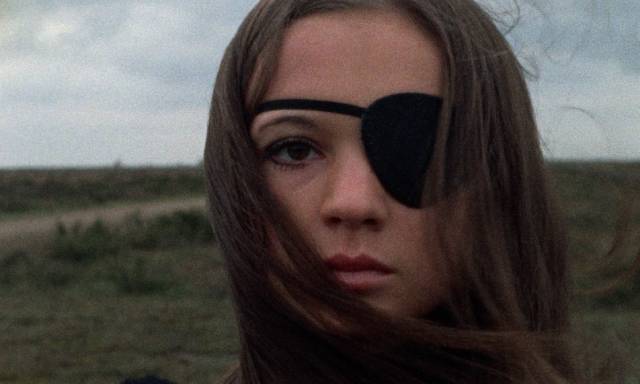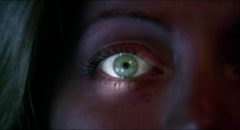
Horror, drug-dealing surfers, women-in-prison, violent revenge, lab-created monsters, musical zombies and aliens crowd Vinegar Syndrome’s summer release schedule.

When filmmakers attempt to tell a story in a single sustained shot they encounter a number of technical issues because they have to abandon many of the tools developed over the history of cinema. Two recent Japanese movie approach the challenge in very different ways, one (Yuji Shimomura’s Crazy Samurai Musashi [2020]) succumbing to the inherent limitations, the other (Shin’ichiro Ueda’s One Cut of the Dead [2017]) interrogating those limitations with great comic effect.

Recent releases from various Vinegar Syndrome partner labels offer a wide range of styles, from low-budget direct-to-video horror (Ronnie Sortor’s Sinistre [1995], Charles Pinion’s Red Spirit Lake [1993] and We Await [1996]) to a rediscovered slice of Cold War sci-fi/espionage from Switzerland (Jean-Louis Roy’s The Unknown Man of Shandigor [1967]).

A long cold winter, a working-from-home schedule and pandemic-induced malaise means I’ve been watching a lot of undemanding genre movies over the past few months. One of my primary sources in the past couple of years has been Vinegar Syndrome, a company whose dedication to unearthing obscure, often forgotten genre movies equals my own passion for watching them. Although by no means a complete account of my VS viewing, here are brief notes on two dozen titles.

Arrow’s big pre-Christmas sale brought a wide range of titles, some old, some new: Juan Simon Piquer’s Spanish slasher Pieces (1982), Chelsea Stardust’s horror comedy Satanic Panic (2019), Giancarlo Santi’s spaghetti western The Grand Duel (1972), Lee Min-jae’s horror comedy Zombie for Sale (2019), Jill Gevargizian’s psycho horror The Stylist (2020),Nico Mastorakis incoherent first feature Death Has Blue Eyes (1976), a Japanese double bill of sci-fi crime movies, Nobuo Adachi’s The Invisible Man Appears (1949) and Mitsuo Murayama’s The Invisible Man vs the Human Fly (1957), Riccardo Freda’s mix of melodrama and giallo Double Face (1969), Jacques Tourneur’s late film noir Nightfall (1956), and Giorgio Ferroni’s atmospheric Gothic horror Mill of the Stone Women (1960).

I continue my cold-weather plunge into the cheap, cheesy and outre depths of exploitation, finding a few gems among the dross of low-budget horror, science fiction, fantasy and comedy, ending up with an unsettling documentary about someone who devoted his life to filmmaking at the expense of everything including his identity.

It’s been a long time coming, but Paul Morrissey’s two unique Gothic horror movies from the early 1970s – Flesh for Frankenstein (1973) and Blood for Dracula (1974) – have finally arrived on disk in superb restorations, the former from Vinegar Syndrome, the latter from Severin. Both editions are packed with hours of extras, and Flesh for Frankenstein is finally available in 3D (both digital and anaglyphic) as well as flat. Together, the home video highlight of 2021.

It’s been a good year for movies on disk, with a remarkable range of releases from many companies which are devoting considerable resources to rediscovering, restoring and preserving movies in numerous genres. Ranging across nationalities and spanning cinema history, there was plenty to divert attention from a real world which has become so depressing and exhausting.